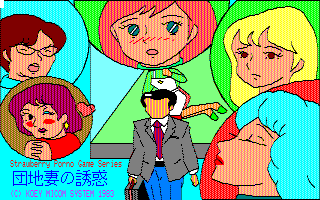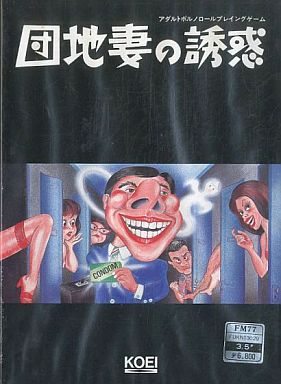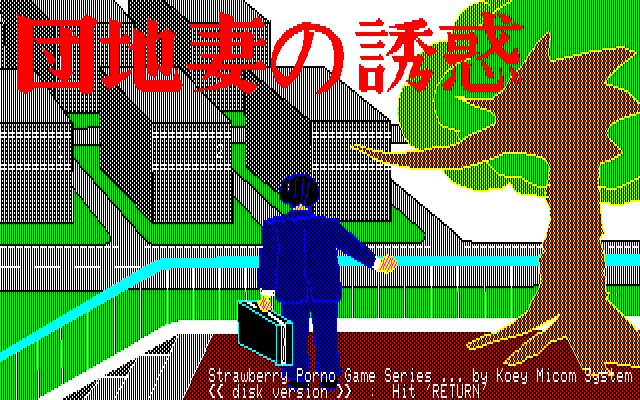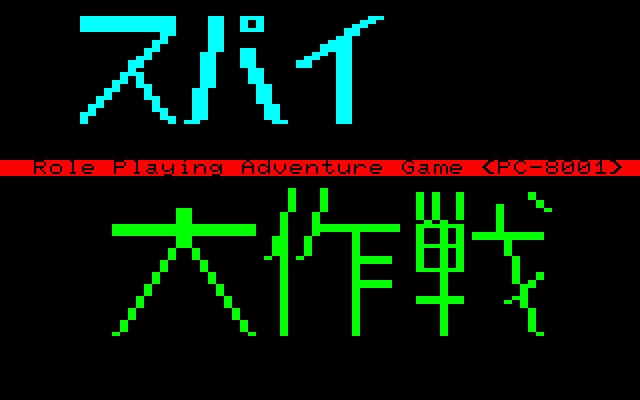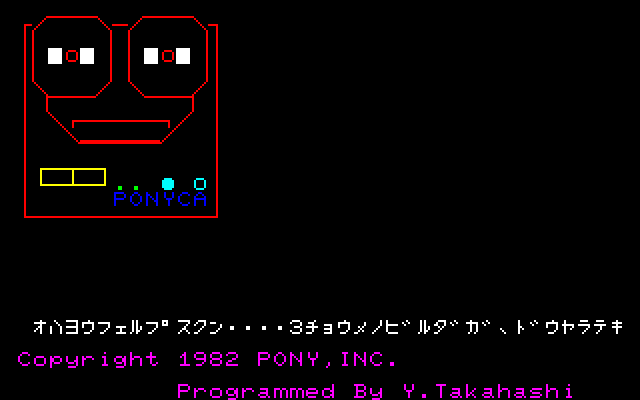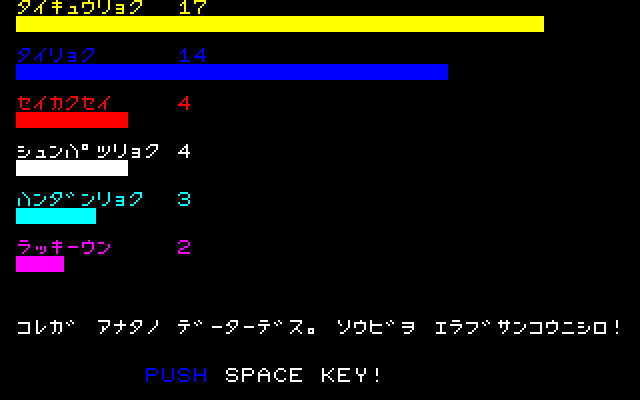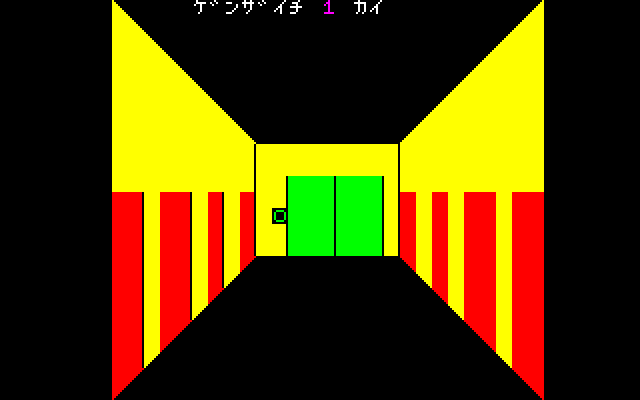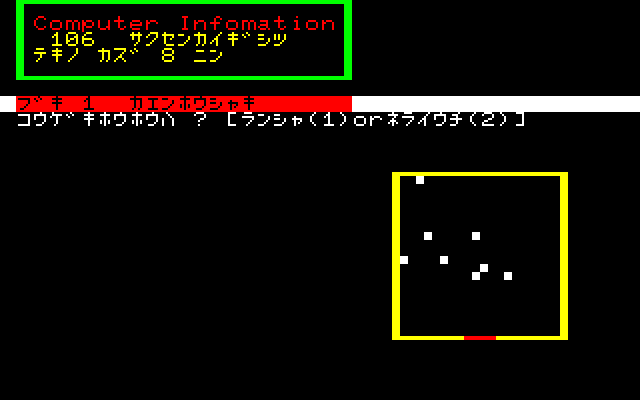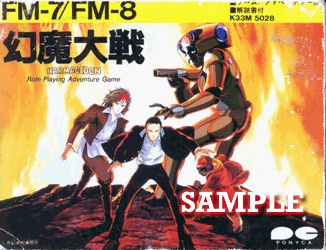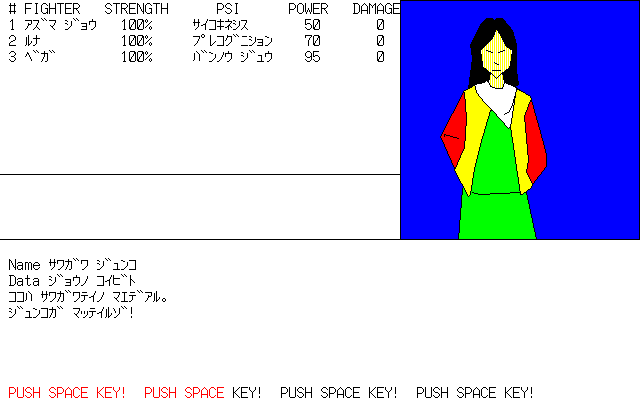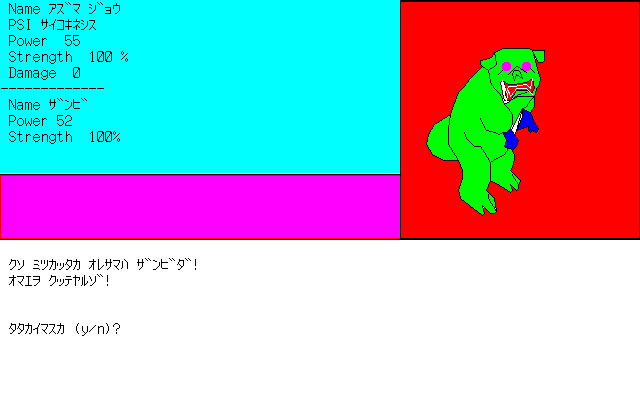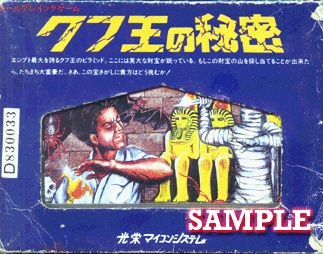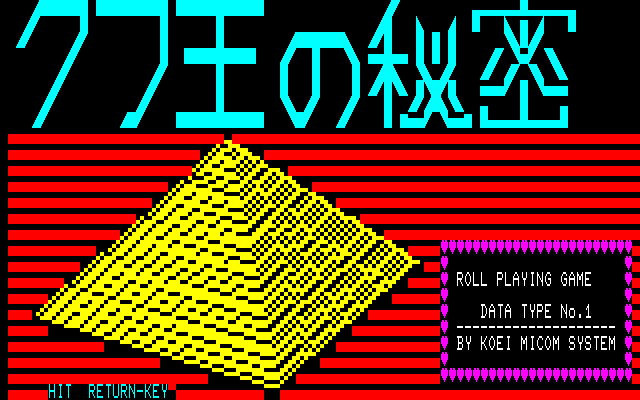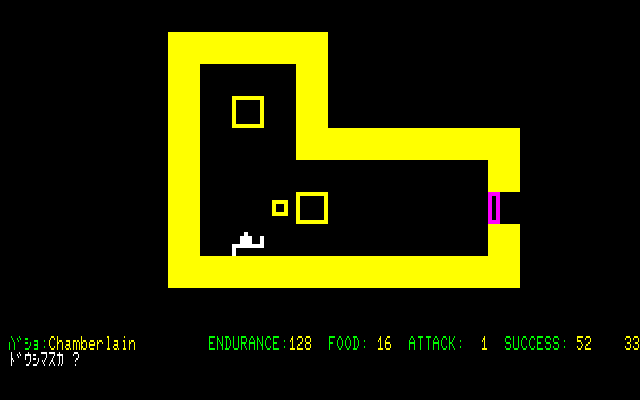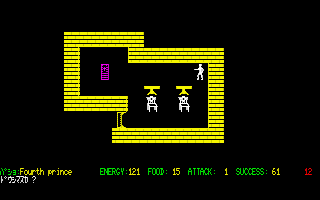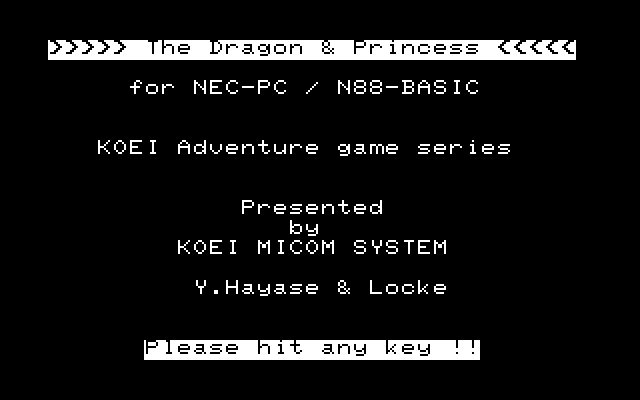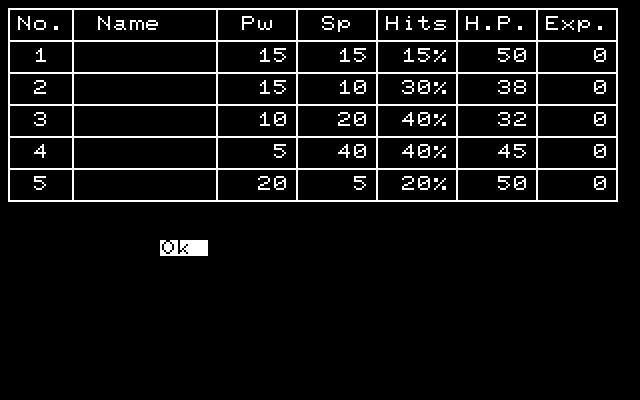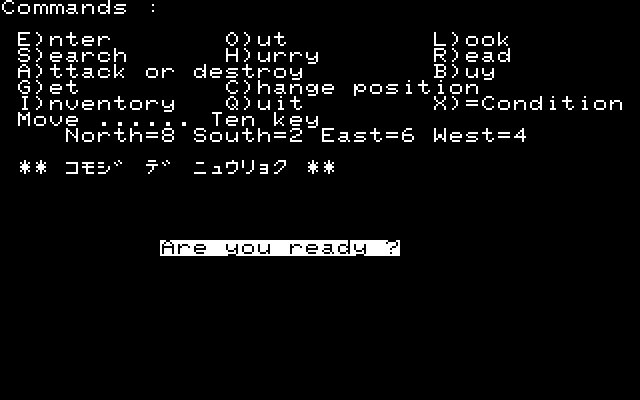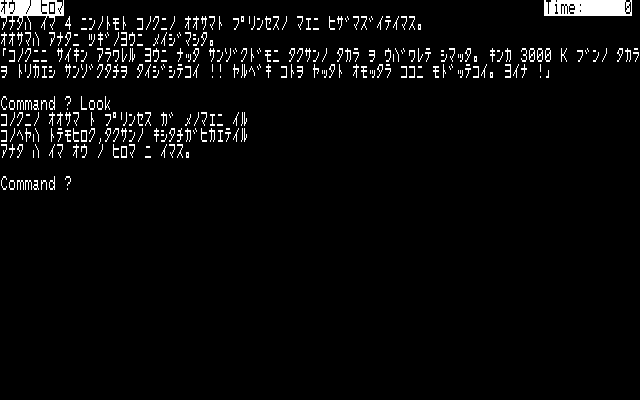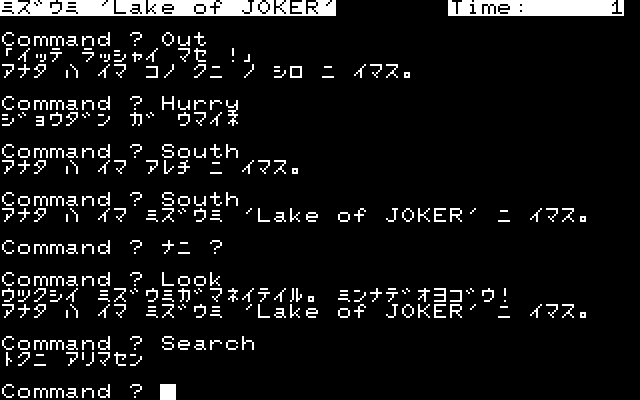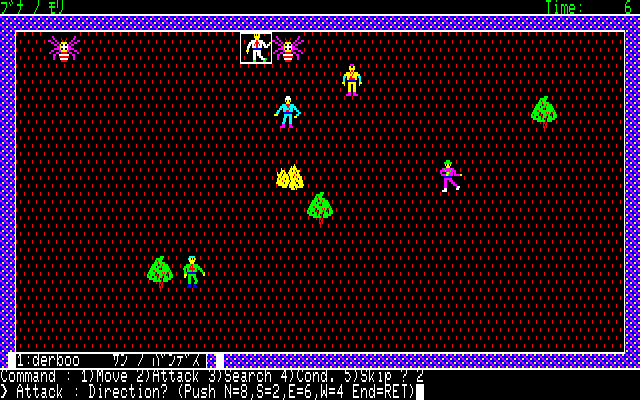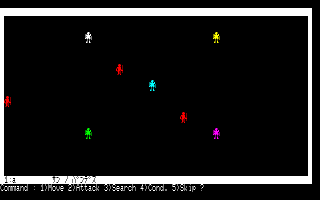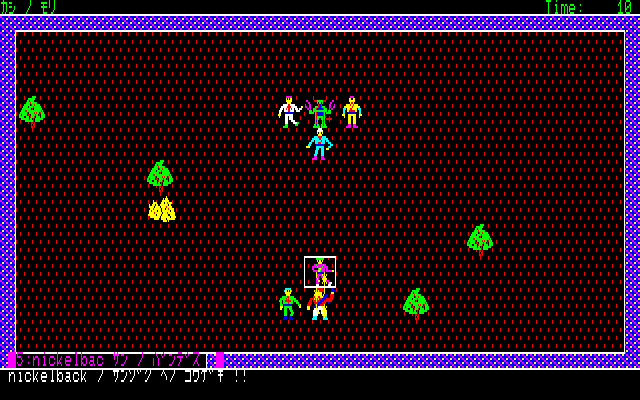Japan being Japan, you knew it was only a matter of time until the first "erotic" game would show up in this column. Koei's third entry in the genre, after The Dragon & Princess and Khufu-Ou no Himitsu, roughly translates to "Housewife Temptation" and proudly proclaims the "Strawberry Porno Game Series." Despite the label, it's actually not much of a porn game, though, no more than the first Leisure Suit Larry was. The player assumes the role of a door-to-door salesman who set himself the noble goal to not only sell his goods to all female inhabitants of a huge appartment complex, but apparently also to have sex with them while he's there.
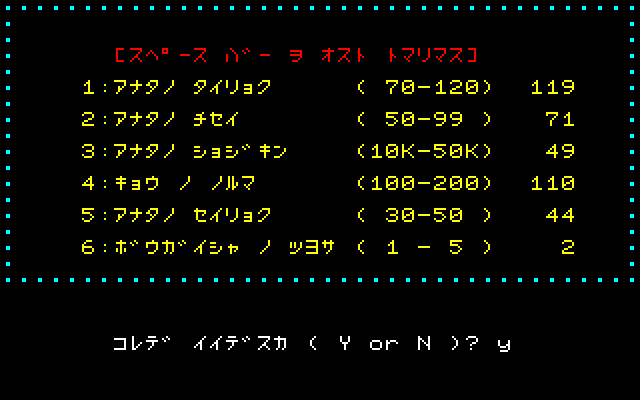
At the beginning the player gets to roll the protagonist's stats. The first two are health and intelligence, which get reduced for pretty much every action taken in the game, but can be recharged slightly with some random items found on the floor. Then follows the amount of money one start the game with, virility needed to engage in the sex scenes, and oddly the difficulty of fights. There's also a stat I cannot decipher, but in the game it changes to "skin," which is another name for condom in Japanese.
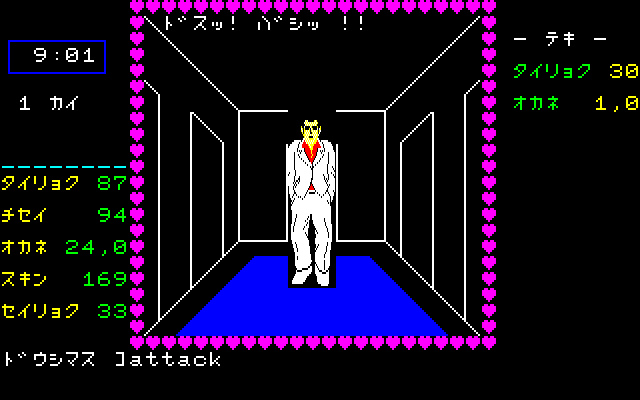
Walking around the appartment floor, the would-be Casanova is randomly attacked by ghosts or gangsters, all there is to do here is keep pressing (A)ttack and waiting for the results. Victory earns a pityful amount of money, but it is never worth the damage taken. The random healing items the "hero" can (T)ake from the floor are equally impotent, so keeping health and intelligence in check is a constant uphill struggle.
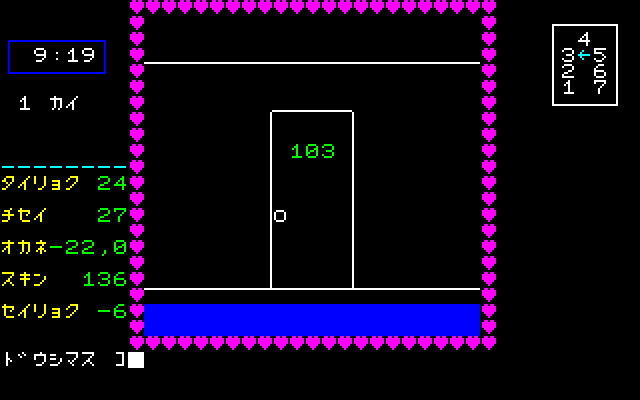
Really all you got to do is pick a door, (K)nock for a random number of times that is not indicated anywhere, then say (H)ello and (O)pen the door after the woman inside has asked you in.
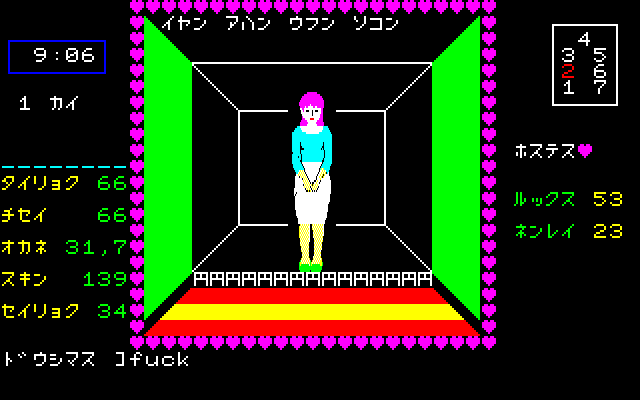
Facing the lady of the house, the righ part of the screen gives a description of her like "Hostess," "Housewife," "Women's College Student," "OL" or "Turkish Woman" - I'm sure the latter two are some indecent Japanese 80s slang words. Below that is a value for her looks, followed by her age. All these values, including the visual representation in the middle, are randomized each time the game is played.
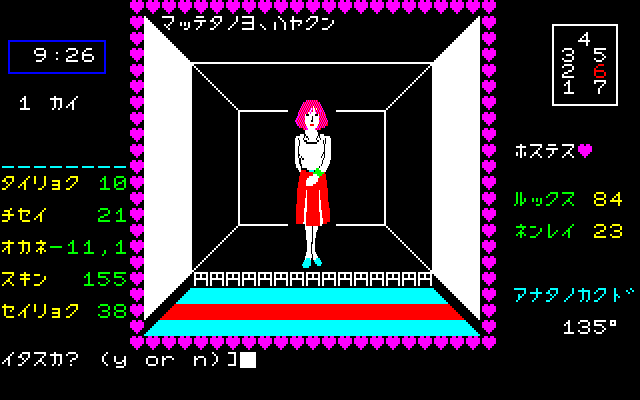
The ways to interact with the ladies are unfortunately very limited; you can (P)ay them a set amount of money, try to (S)ell something or try to commence (F)ucking - yep, that's what the command is called, no pretense here. When you type one of the latter, chances are you just get thrown out, but it may also result in a sex scene. (S)ell is actually pretty weird, cause it either prompts to type in an amount - which almost always results in getting shown the door, too - or answer yes or no, where yes means sex.
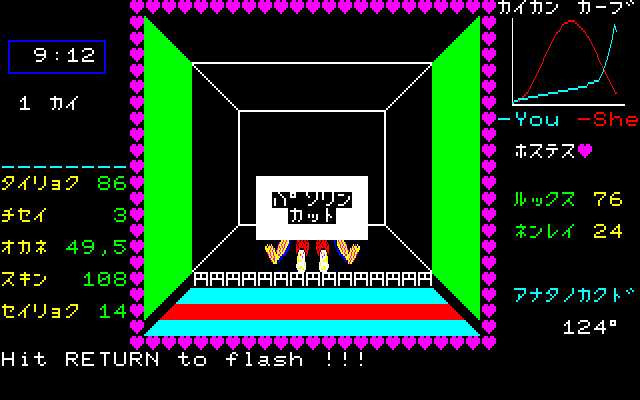
So this is all the glorious eroticism of Danchizuma no Yuuaku - all you see are two pairs of legs that shiver occasionally, and you're told to "Hit RETURN to flash !!!" It's not quite clear whether the key has to be pressed rapidly or rhythmically, but it seems that if one makes the blue graph rise too quickly, it just starts plummeting down. The "Your Angle" stat in the lower right corner might have to do something with it, cause it changes for every scene.
After the pitiful scene the player is awarded a score, which is negative most of the time. The act also consumes virility and money, even when the game claims one has just earned some ten thousand-something yen. Getting in debt actually isn't much of an issue, though. The (P)ay command is not available anymore, but otherwise the game just goes on. The "skin" value also decreases when there is no sex scene. Are condoms what the guy is actually selling?
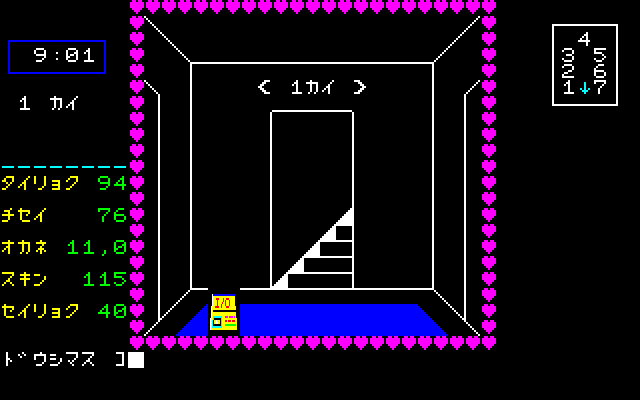
There is a staircase that seems to lead to the second floor, but it is unaccessible, supposedly until one has sold enough crap to the women in all seven appartements on the first. Given the rapid pace with which the stats go down, however, the task seems pretty much impossible, bare any hidden strategies that might be lost to us. Below are a few of the women you can meet in the appartment complex. There's a Japanese page that also shows some bikini girls and a bearded crossdresser(?), but I never met those.










FM-7 version cover:
